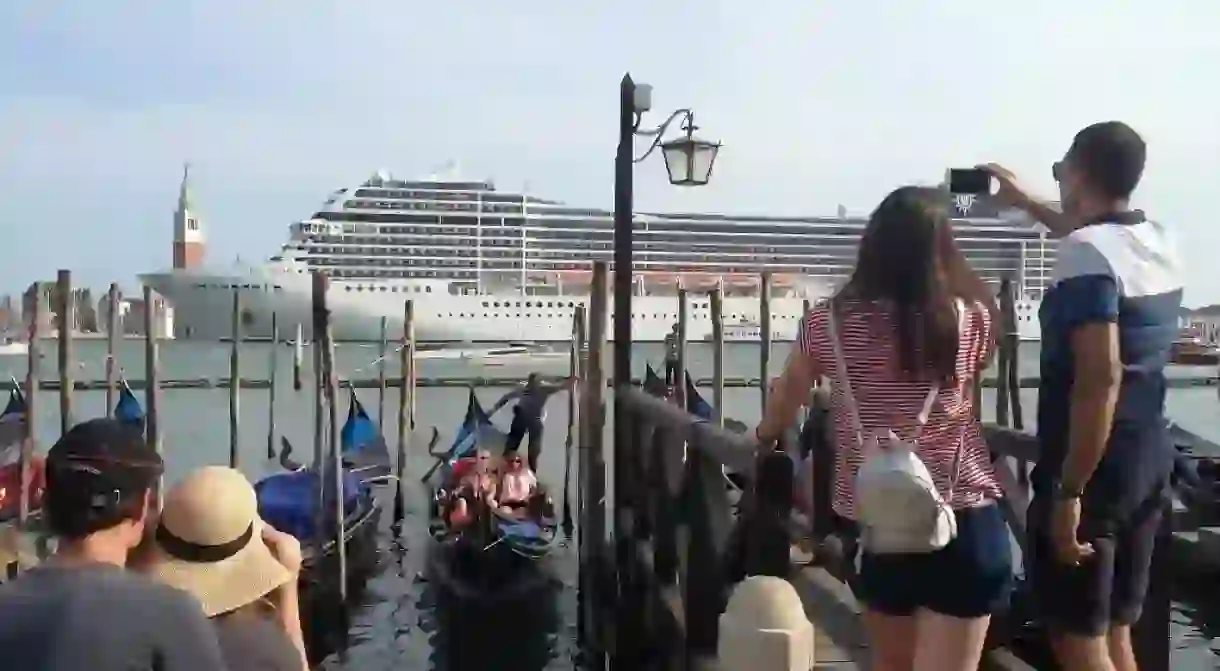What it's Like to Live in Europe's Most Overcrowded City

Every year, headlines about Venice’s death at the hands of tourism will spring up like mushrooms across many different publications. “Can We Save Venice?” they ask, describing the “Disneyfied shopping malls,” frustrated locals, the congested waterbus system, the depopulation crisis and the massive cruise ships destroying the lagoon ecosystem. It’s a postmodern nightmare in a medieval watery dreamland.

Yes, Venice is dying. The city today is inundated with tourism on a scale that was unimaginable just thirty years ago. The numbers themselves are overwhelming — a city with just 54,000 residents left, less than half of the population of three decades ago and almost a third of what it was in 1950. People are getting pushed out at an alarming rate. Venice has always had many visitors, but it has never had numbers like this — 2 million people every year, with half of them staying for just one day. This kind of grab-and-go tourism centered on tour groups and cruise ships are part of a recent turn in travel culture that’s delivered a shock to the city.

But when I fell in love with Venice, this was not the city that I saw. The Venice I loved had a kind of beautiful autonomy. There were cramped little nonsensical shops that were like the closets of antiques-loving hoarders. There were DIY concerts organized in student apartments and social spaces. There were poorly organized charity thrift stores run by grandmothers. I drank in bars where they poured out drinks with stony-faced indifference and hung out in messy studios where neighborhood artists tried to sell their paintings. These were places that were supremely unconcerned with packaging themselves into neatly consumable experiences. They overflowed with life and character.

This is a face that Venice will never show to those who don’t truly spend time here. People who are here for a day want something quick, easy and cheap. Shops are springing up all over town that sell some cheap little thing, like gelato, trendy clothes, mass-produced trinkets, or take-away food. Just take a look at the overflowing trash cans at the end of the day and you’ll get a sense of the incredible amount of throwaway waste that visitors plow through. Plastic bottles, takeaway boxes, ice cream cups — the debris of fast food and instant culture.
The kind of travel that happens today is part of the disease of globalized capitalism. It promises to make everything quicker, easier and cheaper, but just ends up smothering what’s authentic and free, like those nonsense shops I loved. It profits off of every day, local people and enriches big corporations with an international reach. Its effects are felt everywhere. The symptoms might differ here and there, but the underlying affliction is the same and it’s by no means confined to our charming Venetian canals.

It’s touched Barcelona, where rents are spiraling out of control and driving out residents. It’s reached Marrakesh, where rich, foreign investors will buy up riads from local families to convert into hotels, pushing Moroccans out of the historic center. Our list charts some stunning exceptions to the rule. It’s devoured Chinese mega-cities like Shanghai and Beijing, where state-sponsored projects will sweep away entire neighborhoods overnight in favor of shopping malls and trendy, modern districts. It’s transformed Istanbul, where protests over the Turkish version of 1960s-American-style “urban renewal” came to a head in 2014, provoking a brutal governmental crackdown. It’s even ravaged New York City, where hyper-gentrification in the last decades has turned the city of counter-cultural rebellion into a city of corporate chains, upscale restaurants and expensive boutiques — a luxurious tourists’ playground.
Now, unlike all the other dying cities, Venice a city that gets a ton of publicity about dying. Its brand is about romantically dying. Saving Venice has long been a rallying cry not only for locals at risk of losing their homes and businesses, but also for a chic international set. Just check out the black-tie balls held by the Anglo-American organization literally called “Save Venice.” Not everyone can love the Times Square of the hustlers and the peep shows, but it’s easy to love romantic Venice. Discussions about these problems always end with some version of a call to action, saying we should do something because Venice is a part of our cultural patrimony.
The results are truly incredible. It seems that no matter how many celebrities put on ball gowns to Save Venice, no matter what kinds of threats are leveled by UNESCO and most tragically, no matter how many years of organizing and protests Venetians have kept up, there’s barely a hiccup in the operation of this well-oiled machine, which goes on sending in those massive cruise vessels and squeezing people out of their homes. It keeps on sucking out the marrow of the city.

Though Venice in the end hasn’t got it all that bad. The locals might be driven out, just like everywhere else, but at least the buildings still remain, gorgeous, crumbling, centuries-old buildings balanced on wooden pilings driven into the lagoon floor. On the other hand, perhaps they’re why the incursions of this destructive industry seem so intolerable here. They look down at us, at our amnesia, at our mindless excess and waste, at our consumption. They stay and reproach us.













